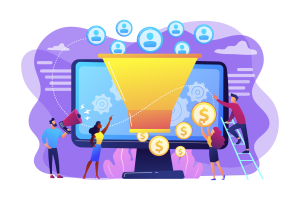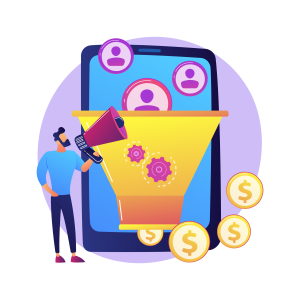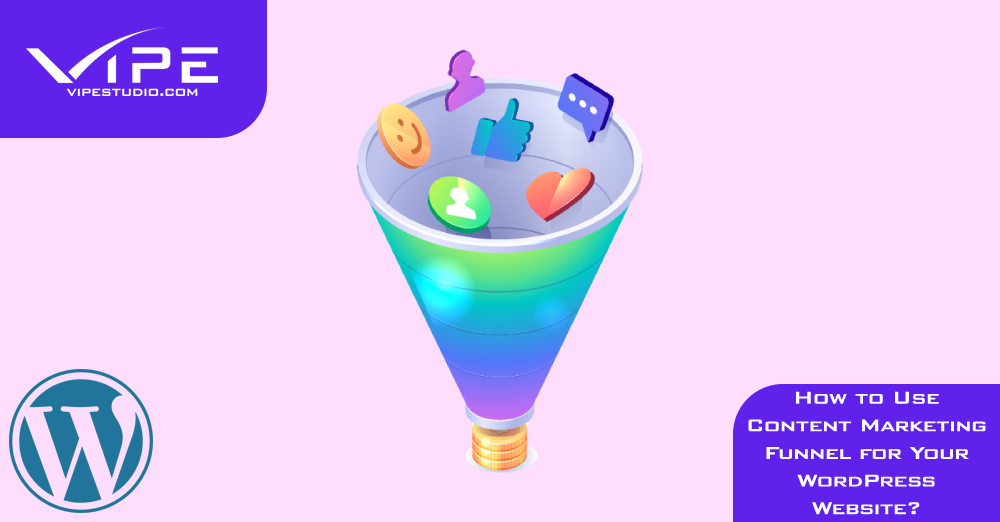24.07.2022
WordPress Marketing
How to Use Content Marketing Funnel for Your WordPress Website?
READING TIME: MIN
Table of Content
Having content marketing is a must and most people don’t find it hard to create. But when it comes to executing the strategies, most businesses find it difficult. There are some crucial steps you need to follow in order to succeed. And here come the experts from our WordPress development agency to lead you through the path of a successful content marketing funnel. Let’s start!
What is a Content Marketing Funnel?
To turn as many leads into paying customers who are eager to buy the goods or services you are attempting to offer, you must employ highly engaging and valuable content on each step of a sales funnel—Awareness, Evaluation, and Purchase. This is known as a content marketing funnel. Our WordPress development agency will tell you more about what to expect at each stage of the sales funnel in this piece, and then we’ll walk you through the process of setting up a content marketing funnel on your WordPress website right away.
Step 1: Recognize the Purpose of a Sales Funnel
How well do you know your clients will play a general role in the foundation of an efficient sales funnel. This implies that before doing anything else, you should have created buyer personas that describe the characteristics of your target market.

Awareness Stage
The purchaser looks for a remedy or solution to a need or an issue. At this point, it’s unlikely that they will sign a contract in return for a free consultation. What will work is visually appealing information that describes who you are and the things you are attempting to market such as infographics and movies.
Evaluation Stage
At that stage, our WordPress development agency advises you to establish why your solution is the most appropriate among their selections after grabbing their attention. Your middle-of-the-funnel material should focus on persuasive arguments for why customers need your good or service, which will encourage them to proceed to the purchase stage.
Purchase Stage
Your leads’ purchase decisions are made at this moment. If your prospects have gotten to this point, it’s quite probable that they are prepared to commit.
Step 2: Organize your sales funnel
After learning the fundamentals of a sales funnel, you must organize your current sales funnel and create a more defined action plan. When creating your content marketing funnel, our WordPress development agency recommends keeping the following things in mind:
- What is the most important step in your sales funnel where a visitor might become a customer?
- How are you going to contact your prospects?
- What offers do they get, and how are they presented?
Step 3: Create a WordPress Website Plan For Your Opt-in Points
Opt-ins are buttons that show on various pages of your website and allow visitors to sign up for free things like premium content or a series of emails. With the help of these ideas, you’ll be able to expand your email lists with the most qualified leads, drive more traffic to your website, and pique the interest of your target market in your business.
Step 4: Produce Content for Every Stage
For each stage of the sales funnel, the following samples of content are suitable:
1. Awareness Phase – Extremely Engaging but Low on Text
- PC/Social Media Ads
- Landing Pages
- Website
- Social Media Content
- Explainer Videos
- Infographics
- Evergreen Content
2. Evaluation Phase – Thought Leadership Content
- How-to blog posts/Guides
- White-papers/eBooks
- Case Studies
- Webinars
- Email Newsletters
3. Purchase Phase – Social Proof
- Testimonials
- User-generated content
- Ratings and Reviews
- Regular E-mails
Our Headless WordPress development agency reminds you not to forget to include themes in the content you produce that give readers a “taste” of your opt-in offer as well as those that answer their issues at each level of the sales funnel.

Stage 5: Amplify Your Content
If your audience is unaware that you have 100 high-quality blog entries, they are all meaningless. After creating content, you need to market it to attract more people to your website and funnel them into your sales funnel.
- Contacting relevant blogs, websites, and influencers
- Paid Advertising on Social Media Platforms
- Email Marketing
- Retargeting
- Relevant Content Directories and Syndication
Stage 6: Recover lost leads and clients
It is common to be unable to persuade everyone to buy your products or take you up on your free offers. It indicates that you are only drawing in clients that are a perfect fit for your company and what you have to offer. The building blocks for creating a content-driven sales funnel on your WordPress website are as follows.
To the Bottom of Success!
By simply following these steps, you can get closer to your prospects and convert them into clients! We hope our article was helpful I’m finding the best way for your customers. For more WordPress tips, keep reading our blog!
More on The Topic
- WordPress for High Traffic Sites: Strategies for Scalability and Stability
- Looking For the Best Email Marketing Strategy? Here Are 5 Tips for WordPress Websites
- Reaching New Heights in WordPress’s Conversion Rate: Sharing Must-Follow Tips
- 7 Must-Have Email Marketing Strategies for Your WordPress Website
- Content Strategy in WordPress: Yet Another Successful Business Guide
Tags: buyer personacontentcontent marketingcontent marketing funnelmarketingSales funneltarget marketWordPresswordpress website
The content of this website is copyrighted and protected by Creative Commons 4.0.




